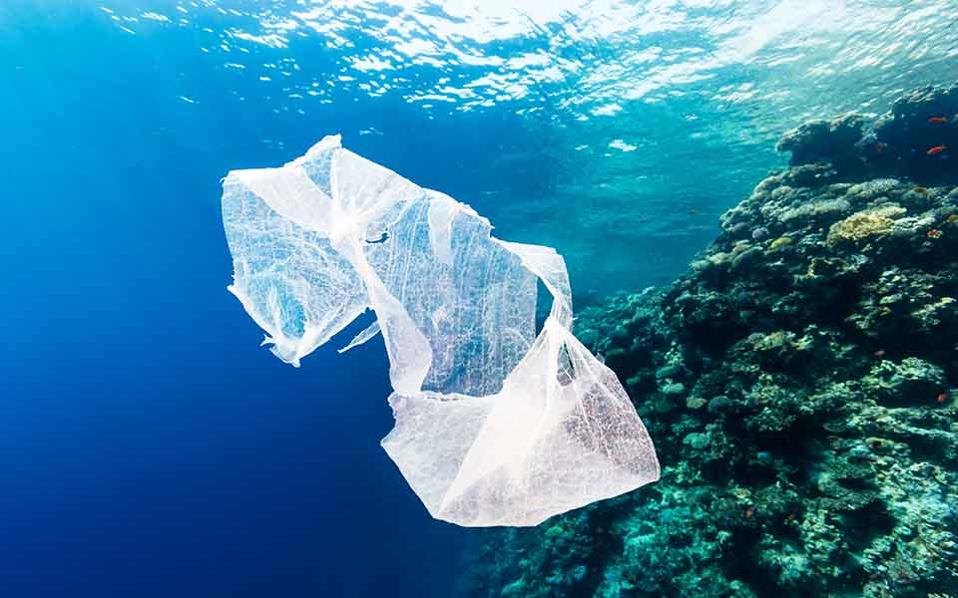
Where does the plastic go when it gets into Aegean Sea; A new European report shows a chaotic difference between Greek and Turkish coastin terms of “production” and mismanagement plastic waste. Nearly twice as much plastic waste is produced by coastal residents in a neighboring country, and the difference becomes even greater if productivity Dodecanese and from islands of the northern Aegean with opposite Turkish provinces.
OUR new report from the European Environment Agency with the theme “From Source to the Sea – The Untold Story of Marine Pollution” sheds light on the issue by compiling the latest scientific publications. As they say, from 2010 to 2018 the total production of waste in the EU. increased by 4.4%, “demonstrating that Europe is falling short of its waste prevention and reduction targets”. 85% of the garbage collected at sea and ashore is plastic, of which 65% is plastic packaging and small plastic items.
“This is a significant issue due to the impact of plastic on marine life and human health due to its entry into the food chain,” he says.
The report details the production of plastic waste in European coastal areas and the quantities that are estimated to be misused. Of particular interest are data on two sides of the Aegean. AT HellasThus, the production of plastic waste in coastal areas increased from 236,500 tons in 2012 to 258,500 tons in 2018, and in Turkey from 3,078,600 tons in 2012 to 3,453,300 tons in 2018. increased from 19,700 tons in 2012 to 21,500 tons in 2018 compared to 1,491,000 to 1,703,700 tons in Turkey in the respective periods.
According to a European survey, the performance of the neighboring country in the field of waste management is discouraging.
The impact of each country on marine pollution in the Aegean becomes more apparent when one examines the differences between neighboring regions. For example, it is estimated that 218 tons of waste was improperly disposed of in the Lesvos-Lemnos section in 2018, compared to 25,216 tons in Balıkesir province. Corresponding difference between the regional unit of Chios (113 tons) and the province of Smyrna (89,500 tons), in the regional unit of Samos – Ikaria (93 tons in 2018) and the province of Aydin (22,600 tons), in the Eastern Dodecanese (430 tons per year) and Mugla Province (19,600 tons). The difference between the two countries is not just about population: it is estimated that each Greek produces 24.1 kg of plastic waste per year, while each Turk produces 42.4 kg. Accordingly, the amount of plastic waste that is not properly managed is 2 kg per year per inhabitant of Greece, compared to 20.9 kg per year per person in Turkey.
In Europe
In Europe as a whole (the report lists 33 countries), the mismanagement of plastic waste is estimated to have increased by 3.8% in 2012-2018, from 2.9 million tons to 3 million tons. The increase was recorded in 27 out of 33 countries. “This increase appears to be mainly due to an increase in the production of plastics, which cannot be supported by advances in waste management technologies,” the report says. The main sources of “plastic pollution” of the sea are considered to be illegal dumps, tourist activity, poor biological treatment, agriculture, commercial shipping and fish farms.
With regard to the fight against marine pollution, European Environment Agency argues that it should be based on improving our knowledge of the problem and on a more holistic approach. “We need a more complete picture of the real problems, pollution sources, waste routes, quantities and impacts,” he says. “Traditional” subbotniks and monitoring of the shores by volunteers are indispensable. Technology is playing an increasing role, including satellite tracking. The goal should be to improve our knowledge of waste ‘leakage’ from land and rivers, as well as shipping.”
Source: Kathimerini
Ashley Bailey is a talented author and journalist known for her writing on trending topics. Currently working at 247 news reel, she brings readers fresh perspectives on current issues. With her well-researched and thought-provoking articles, she captures the zeitgeist and stays ahead of the latest trends. Ashley’s writing is a must-read for anyone interested in staying up-to-date with the latest developments.